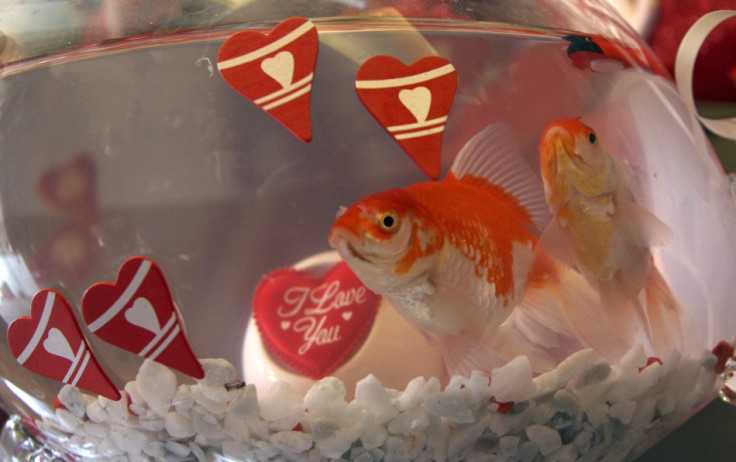Evolution Causing Fish to Jump Out of Their Bowls?
Biologist finds that evolution fuels deathwish of goldfish and guppies

Many fish owners will no doubt have had a problem with their pet's apparent deathwish - jumping out of their bowls and into danger.
The reason for this suicidal behaviour has been attributed to several factors.
Goldfish-emergency.com says the water being too warm can lead fish to jump, as can parasitic infections, which cause the fish to try to escape its discomfort.
The site also says fish could just be lonely and they leap from their bowls in an effort to find other fishy friends.
However, a biologist from the University of Maryland has found another reason for this behaviour - evolution.
Daphne De Freitas Soares began researching the behaviour in guppies when one jumped out of its tank and into her cup of chai: "Fortunately it was iced chai and it had a lid on, so he stayed alive. That was enough for me. I had to use a high speed camera to film what was going on."
Soares filmed nine guppies from the wild to analyse their jumping behaviour and found that the fish started from a still position, swam backwards, then changed direction and flew into the air.
She found they were able to jump eight times their body length at around four feet per second.
Soares and fellow researcher Hilary Bierman said jumping serves an important evolutionary purpose as it allows them to reach all the available habitats in mountain streams.

Being able to move away from areas populated by predators and minimising competition helps to keep the species' genetic variability high, they concluded. "Evolution is truly amazing," Soares said.
The study was focused purely on guppies, so other breeds of fish may jump for other reasons. Sophie Adwick, RSPCA senior scientific officer in the wildlife department, offered advice on how to deal with jumping fish.
She told IBTimes UK: "In terms of there being any other reasons for fish to 'jump' (besides those stated in the paper: prey capture, migration, predator avoidance, dispersal), it is possible that jumping behaviour could be used as a last ditch attempt to escape an unsuitable environment.
"When keeping fish in a captive situation, steps can be taken to minimise the chance of fish jumping. The most important of these is to provide the animals with a suitable environmental that meets their needs.
"It is vital to maintain high water quality with parameters [such as temperature, pH and waste chemical levels] within a range acceptable for the type of fish being kept. These parameters should be monitored on a regular basis and remedial action taken whenever necessary.
"Aside from water quality, the aquarium should provide for the other needs of the fish - so for instance, there should be places for them to hide and they should be kept in numbers suitable for their species. In addition, a lid covering the top of an aquarium will provide a physical barrier to contain fish even if they jump.
"If a fish does manage to jump out of a tank, quickly but gently replace it with clean damp hands or a smooth net and observe it carefully for any obvious damage or changes in normal behaviour. If you are concerned, call a specialist fish vet or reputable fish specialist for advice."
© Copyright IBTimes 2025. All rights reserved.






















